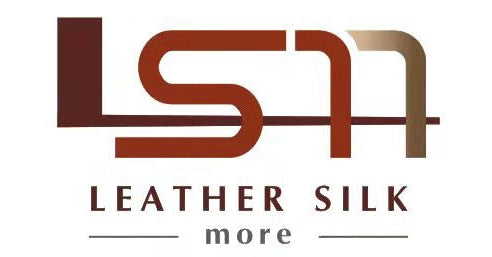When shopping for leather goods, it's essential to understand the different types of leather available to make an informed choice. Full-grain leather is often considered the highest quality, but there are other types of leather, such as top-grain, genuine, and bonded leather, each with its characteristics and uses. In this blog, we will compare full-grain leather to these other types, highlighting their differences and helping you understand why full-grain leather is often the preferred choice.
Full-Grain Leather
1. Definition: Full-grain leather is made from the top layer of the hide, which includes all of the natural grain. It is not sanded or buffed to remove imperfections, allowing it to retain the hide's original texture and markings.
2. Characteristics:
- Durability: Extremely strong and durable, capable of lasting for decades.
- Appearance: Retains natural imperfections and develops a rich patina over time.
- Breathability: Highly breathable, allowing the leather to adapt to environmental conditions and usage.
3. Uses: High-end furniture, premium handbags, wallets, belts, and shoes.
Top-Grain Leather
1. Definition: Top-grain leather is also made from the top layer of the hide but is sanded and buffed to remove imperfections. It is often treated and finished to achieve a uniform appearance.
2. Characteristics:
- Durability: Slightly less durable than full-grain leather due to the sanding process, but still very strong.
- Appearance: Has a smoother, more uniform look; does not develop a patina as richly as full-grain leather.
- Breathability: Less breathable than full-grain leather due to the finishing process.
3. Uses: Mid to high-end furniture, handbags, and leather goods that require a more uniform appearance.
Genuine Leather
1. Definition: Genuine leather is made from the lower layers of the hide that remain after the top layers have been split off for full-grain or top-grain leather. It is often sanded and treated to mimic higher-quality leathers.
2. Characteristics:
- Durability: Less durable than full-grain and top-grain leather, more prone to wear and tear.
- Appearance: Can look good initially but lacks the depth and character of higher-quality leathers; does not develop a patina.
- Breathability: Limited breathability compared to full-grain and top-grain leather.
3. Uses: Affordable leather goods, budget-friendly furniture, and accessories.
Bonded Leather
1. Definition: Bonded leather is made from a mixture of leather scraps and fibers that are bonded together with adhesive and then coated to look like full or top-grain leather.
2. Characteristics:
- Durability: Least durable of all types of leather; prone to peeling and cracking.
- Appearance: Can mimic the look of higher-quality leathers but lacks the genuine feel and durability.
- Breathability: Minimal breathability due to the heavy coating and bonding process.
3. Uses: Budget-friendly furniture and accessories, items where cost is a significant factor.
Comparison Summary
1. Durability:
- Full-Grain Leather: Highest durability, suitable for long-term use.
- Top-Grain Leather: Very durable, but slightly less so than full-grain.
- Genuine Leather: Moderately durable, suitable for less demanding applications.
- Bonded Leather: Least durable, suitable for budget-conscious purchases.
2. Appearance:
- Full-Grain Leather: Natural, unique, and develops a beautiful patina.
- Top-Grain Leather: Smooth, uniform, and polished look.
- Genuine Leather: Can look good initially but lacks depth and patina.
- Bonded Leather: Mimics higher-quality leather but lacks authenticity and durability.
3. Breathability:
- Full-Grain Leather: Highly breathable, adapts well to use and environment.
- Top-Grain Leather: Moderately breathable, slightly reduced due to finishing.
- Genuine Leather: Limited breathability.
- Bonded Leather: Minimal breathability.
4. Cost:
- Full-Grain Leather: Highest cost, reflects quality and longevity.
- Top-Grain Leather: High cost, but generally more affordable than full-grain.
- Genuine Leather: Moderate cost, budget-friendly option.
- Bonded Leather: Lowest cost, suitable for budget purchases.
Conclusion
Understanding the differences between full-grain leather and other types of leather is crucial when choosing leather goods. Full-grain leather stands out for its unmatched durability, natural beauty, and ability to develop a rich patina, making it a worthwhile investment. While top-grain, genuine, and bonded leather have their uses and price points, they do not offer the same level of quality and longevity as full-grain leather. When quality, longevity, and authentic beauty are your priorities, full-grain leather is the superior choice.
